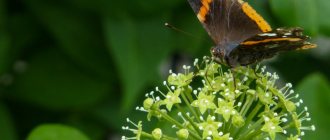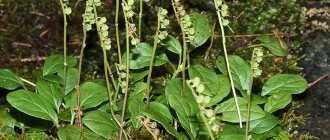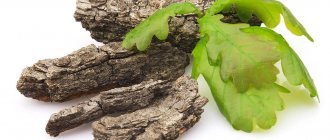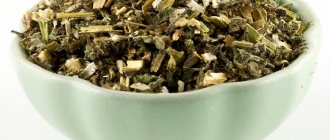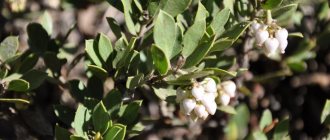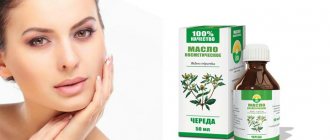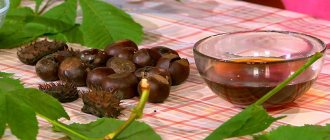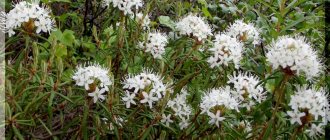Echinacea herb is an antibiotic and antiseptic of natural origin. Often used during exacerbation of seasonal diseases.
- How to take Echinacea for children
- Echinacea during pregnancy
- How to make echinacea tincture
- How to brew echinacea tea
- How to take Echinacea tablets
- How to take echinacea for a cold
- How to drink echinacea for prevention
- How to drink echinacea to boost immunity
Indications for use
Echinacea has a wide range of uses. The medicine can be used to treat various diseases and for their prevention. The drug is often used as part of complex treatment.
Also, echinacea monopreparations are effective in the following cases:
- metabolic problems and related diseases (diabetes mellitus, liver disease);
- stress and depression;
- inflammatory processes;
- infectious diseases;
- female and male infertility (complex treatment);
- after surgery and prolonged use of antibiotics;
- problems with potency;
- skin lesions.
Echinacea: benefits and medicinal properties
Thanks to its immunostimulating and immunomodulating properties, echinacea supports weakened immunity, prevents complications, increases resistance to infections, stops the proliferation of microbes, and improves the protective functions of the human body. And the most important thing, perhaps, is that these are natural ingredients, not synthetic drugs:
- echinocin and echinolone (natural antioxidants, antioxidants) have general strengthening and tonic effects;
- echinazides (natural antibiotics) have antimicrobial and anti-infective effects;
- glucose (natural monosaccharide or grape sugar) is a source of energy, improves mental and physical abilities;
- tannins (organic substances) have anti-inflammatory effects;
- polysaccharides (high molecular weight carbohydrates) increase immunity through the formation of interferons and have a wound-healing effect;
- betaine (natural salt) improves liver function; phenolcarboxylic acids (natural aromatic acids) have immunostimulating effects and have diuretic properties;
- flavonoids (natural polyphenols, essential oils) strengthen the walls of blood vessels and have antiviral and analgesic effects;
- the prebiotic inulin (a natural food component - a polysaccharide) improves the functioning of the liver and intestines, nourishing its microflora, breaks down and removes fats from the body, and also normalizes the amount of sugar in the blood by lowering it;
- polyenes (natural antibiotics) have antifungal effects;
- phytosterols (plant analogues of cholesterol) have antitumor and anticancer effects.
Thanks to its rich composition of active biological components, Echinacea purpurea has many beneficial properties and effectively copes with many diseases. Therefore, it is actively and successfully used for the treatment and prevention of many ailments:
- viral diseases;
- respiratory diseases;
- inflammation of internal organs;
- infectious diseases;
- diseases of the mouth and throat;
- inflammation of the middle ear;
- headache;
- purulent wounds, burns;
- fungal infections;
- insomnia and depression;
- swelling;
- prostatitis and prostate adenoma;
- mental and physical fatigue.
Adverse reactions
In some cases, side effects are possible:
- stomach upset;
- increased fatigue, dizziness;
- high body temperature;
- skin rash.
Long-term side effects such as liver disease and a weakened immune system are also possible. Such effects may occur if you do not follow the instructions.
Pregnant and breastfeeding women, as well as those with pollen allergies, should take with caution.
What is Echinacea?
Echinacea is a natural drug that belongs to the group of plants from the Asteraceae family.
It has anti-inflammatory, antiviral, and immunostimulating effects. Stimulates cerebral hematopoiesis, resulting in an increase in the number of leukocytes and cells of the reticuloendothelial system of the spleen. Increases nonspecific resistance of the body. They say that all diseases are caused by nerves. There is a relationship between emotions and the immune system. Today it has been proven that the mechanisms occurring in the nervous tissue are triggered by the immune system, and not vice versa. For example, chronic infections cause chronic depression. Then a vicious circle arises - immune disorders are triggered by stress and depress mood, stress suppresses the immune system. And here the natural herbal preparation Echinacea comes to our aid.
How to take Echinacea for children
Pediatricians often advise parents to give echinacea to ease the course of the child’s illness and reduce the duration of the illness. It is effective for runny nose, flu and colds. Only a doctor can determine the appropriate dose. Even a harmless decoction or tea can harm a child if self-medicated. Echinacea in syrup form is best for babies. The treatment regimen is as follows:
- Up to 2 years – 1 tsp. a glass of water 2 times a day;
- 3-5 years – 2 tsp. 250 ml of water 2 times a day;
- 5-15 years – 1 tbsp. l. per day (does not need to be diluted with water).
Note!
The description of the drug Echinacea on this page is a simplified author’s version of the apteka911 website, created on the basis of the instructions for use.
Before purchasing or using the drug, you should consult your doctor and read the manufacturer's original instructions (attached to each package of the drug). Information about the drug is provided for informational purposes only and should not be used as a guide to self-medication. Only a doctor can decide to prescribe the drug, as well as determine the dose and methods of its use.
How to make echinacea tincture
Pharmacy echinacea contains alcohol, so it can only be given to adults. In practice, you can give it to a teenager from 12 years old, after diluting 1/3 of the tincture with 2/3 of water. A teenager can be given no more than 10 diluted drops per day. The duration of the treatment course is no more than 60 days.
To prepare your own tincture, you will need to pour fresh flowers or crushed roots with 70% alcohol in a ratio of 1 to 4. Leave to infuse in a dark place for 4 weeks.
Compound
In folk medicine, rhizomes and flower baskets of Echinacea are used. The first ones are collected in late autumn, when the plant loses its leaves, the second ones - during flowering. These parts of echinacea contain many active biological compounds useful for humans:
- polysaccharides - arabinoramnogalactans and heteroxylans, biological enzymes, flavonoids, hydroxycinnamic acids;
- echinocin and echonolone are active antioxidants;
- essential oil – up to 0.5% in flowers, and up to 0.23% in roots;
- tannins;
- macro- and microelements – calcium, cobalt, molybdenum, zinc, selenium.
The roots of the plant contain more glycosides, resins, and phytosterols. The share of inulin, a natural prebiotic, reaches 6%, glucose – 7%. A remarkable fact: betaine is isolated from the rhizome - up to 0.1%. This substance prevents strokes and heart attacks.
How to take Echinacea tablets
Medicine in tablet form is the most common type, especially for children. This is a homeopathic medicine that can be taken from 4 years of age. Children under 12 years of age can be given 1 tablet 3 times a day. A child over 12 years of age and an adult are prescribed 2 tablets three times a day. You need to take the tablet with enough water. The medicine is also available in the form of lozenges. They do not need to be washed down with water, but rather kept in your mouth for as long as possible.
Instructions for use of Echinacea purpurea
Such a popular immunomodulator as purple echinacea has different release forms: tablets, ampoules, tincture, drops, lozenges, capsules, solution. Regardless of the type of drug, the plant effectively increases human immunity, helps with physical fatigue and decreased muscle tone. Echinacea increases the body's defenses; it effectively fights radiation and radiation sickness. Instructions for using the medicine depend on the form of release, the age of the patient and the duration of the disease.
Tincture
A medicine based on Echinacea roots in the form of a tincture or solution has a positive effect on the central nervous system, reduces the proliferation of pathogenic microbes, and increases the number of leukocytes in the blood. Taking echinacea tincture eliminates the spread of inflammation in acute and chronic kidney diseases, and reduces the likelihood of contracting viral infections in autumn and winter. The total duration of treatment is prescribed by the doctor . The tincture should be taken as follows:
- for an adult, the first three days the dose of the medicine should be no more than 30 drops, once 30 minutes before meals;
- then the daily dose must be increased to 60 drops, divided into 3 doses;
- children over 12 years old should take the tincture diluted with water in a ratio of 1:2 - 3 times a day, 10 drops;
- for external use, 15 ml of tincture should be diluted with 100 ml of saline solution.
Decoction
For insomnia and the flu virus, to improve appetite and normalize blood pressure, it is recommended to use echinacea decoction. To prepare it, you need to take a teaspoon of fresh or dry leaves, chop it and brew it with a glass of hot water. Next, the mixture should be placed in a water bath and boiled for 20 minutes, strain, leave for about an hour and drink 3 times a day before meals. This composition improves appetite, cures headaches, stomach ulcers, normalizes sleep and blood pressure.
Echinacea oil
The medicinal plant in the form of oil is effective for infected wounds, carbuncles, burns, abscesses, trophic ulcers, severe bedsores, and cervical erosion. The drug is used to care for dry skin. In addition, purple echinacea oil smoothes stretch marks, wrinkles, and old scars. Directions for oral use: take a teaspoon twice a day half an hour before meals. The course of treatment is one week, then you need to take a break for 14 days. Warm echinacea oil can be used externally by rubbing into the problem area.
How to take echinacea for a cold
Echinacea purpurea is effective for colds. Even if a person has already caught a cold, you can take a herbal tincture to alleviate the condition. Echinacea kills germs, helps with high body temperature, and prevents the proliferation of harmful microorganisms.
To eliminate symptoms, you need to take medicinal tea. It will take 1 tsp. crushed herbs, pour 0.5 liters of hot water and leave to infuse for 45 minutes. You need to drink 250 ml of this tea 3 times a day.
Price for Echinacea purpurea
You can buy such an effective drug for immunity as Echinacea at any pharmacy. It is also easy to order the product in the online catalog of a specialized online store. The cost of medicine in St. Petersburg on average varies from 30 to 100 rubles. The price of Echinacea depends on the form of release, the manufacturing company and the policy of the pharmacy. The shelf life of the medicine is 2 years. Approximate prices for purple echinacea in Moscow are presented in the table:
| Release form of Echinacea | Cost in rubles |
| Sachet No. 10 | 300 |
| Tincture 100 ml | 160 |
| Tablets 205 mg (100 pcs.) | 130 |
| Solution for injection 2.2 ml (5 pcs.) | 866 |
| Syrup 50 ml | 140 |
How to drink echinacea for prevention
If you follow the instructions and do not exceed the prescribed dosage, the tablets can be a good prevention of colds and flu. For preventive purposes, Echinacea should be taken as follows:
- 4-6 years – 1 tablet 2 times a day;
- 6-12 years – 1 tablet 3 times a day;
- From 12 years – 2 tablets twice a day.
You need to take the drug for a week, then take a break for 48 hours and resume taking it again. The duration of the entire preventive course is 30-45 days.
Echinacea is a source of micro- and macroelements
Echinacea is truly a unique gift of nature, since not only the flowers, but also the leaves, stems, and roots have the healing properties of this plant. However, in pharmacology, rhizomes and flowers of the plant are used, since they contain the highest content of useful bioelements necessary for the normal functioning of the human body.
- Iodine regulates the functioning of the thyroid gland, normalizes the functioning of the central nervous system, regulates the amount of cholesterol, and prevents heart disease.
- Iron improves the condition of the blood and thyroid gland.
- Potassium normalizes heart function and has a positive effect on the functioning of the intestines and urinary system.
- Calcium strengthens the skeletal system.
- Silicon accelerates the growth of new tissues.
- Cobalt improves the functioning of the adrenal glands and pancreas, reduces irritability, and regulates the functioning of the nervous system.
- Magnesium strengthens the skeletal system, prevents the development of osteoporosis, normalizes blood pressure, relieves insomnia and depression.
- Manganese has a positive effect on the growth of the skeletal system.
- Selenium has antibacterial, antiviral, anti-infective effects.
- Silver kills viruses and has a disinfecting effect.
- Zinc breaks down proteins, fats and carbohydrates, has a beneficial effect on the functioning of the liver, has a positive effect on the functioning of the nervous system and brain, and regulates the acid-base balance.
But we should remember that everything is good in moderation. Like any medicinal herb, Echinacea should not be taken thoughtlessly and used everywhere. Although the most important thing is that echinacea improves immunity, it can also have harmful effects and, like any other herbal remedy, has some contraindications.
Let's start planting seedlings
Echinacea purpurea is grown in the southern and middle regions of Russia. The plant is unpretentious, but very light-loving. For planting, choose hills with fertile, slightly alkaline soil, well-lit. In lowlands, in damp areas, the flower will not grow.
Important! Acidic soil is alkalized by adding lime.
The plant is propagated by dividing the bush or by seeds. The latter method is used to propagate only species specimens, so this method is unpopular.
Dividing the bush can only be done if the plant is already 4 years old. The rhizome is divided into several parts so that each includes 3–4 renewal buds. It is better to carry out the procedure right before landing. You can use ready-made echinacea seedlings from the nursery.
In the selected area, dig holes up to 5–8 cm deep at a distance of 30 cm. Compost is placed at the bottom of the hole and sprinkled with a thin layer of soil.
If the seedling is from a container, it is placed in a hole with its own lump of earth. If they plant after dividing the root, make the hole more spacious and make sure that the root is placed freely in the hole.
The hole is covered with soil and watered abundantly.
Echinacea purpurea is planted in April before sap flow or in October after the leaves have fallen from the trees. Overwintered flowers will appear in the spring.
Collection and storage
For medicinal purposes, flowers are collected only in the second year of life. The buds are collected from the moment they bloom, that is, in July-August. The picked flowers are placed in a thin layer on paper and air dried in the attic or under a canopy. The leaves are collected in the fall, as at this time more bioactive substances accumulate here.
The Echinacea rhizome is dug up after the stem dies. Wash, cut into small pieces and spread on paper in a thin layer. It is allowed to dry the roots in the oven at a temperature no higher than +40–50 C to prevent the evaporation of the essential oil. Store in hermetically sealed glass containers.
The shelf life of the herb is 6 months, the root is 3 months.
Echinacea purpurea is grown in gardens as a medicine and for garden decoration. The plant is called a natural antibiotic, because it has such pronounced medicinal properties. At the same time, Echinacea is very beautiful and blooms luxuriantly.
How to arrange care
No matter how unpretentious a decorative flower may be, it should be looked after, if only in order to maintain the attractive appearance of the flower bed. Recommendations for growing Echinacea purpurea are very simple.
- The plant is watered moderately but often. You need to make sure that the soil is not too wet.
- The perennial needs feeding. In spring and summer, after the flower has completely faded, a mixture of ash and rotted compost is introduced into the ground. The first feeding of Echinacea is done at the 2nd year of life.
- The flowerbed needs to be weeded. Remove faded flowers and stems down to the green leaves. Then the plant blooms more luxuriantly.
- For winter, the above-ground part of Echinacea is cut to the ground. The root zone is covered with dry leaves to protect it from frost.
Important! Nitrogenous fertilizers are introduced into the soil very carefully. They are needed only in spring and only on poor soil.
